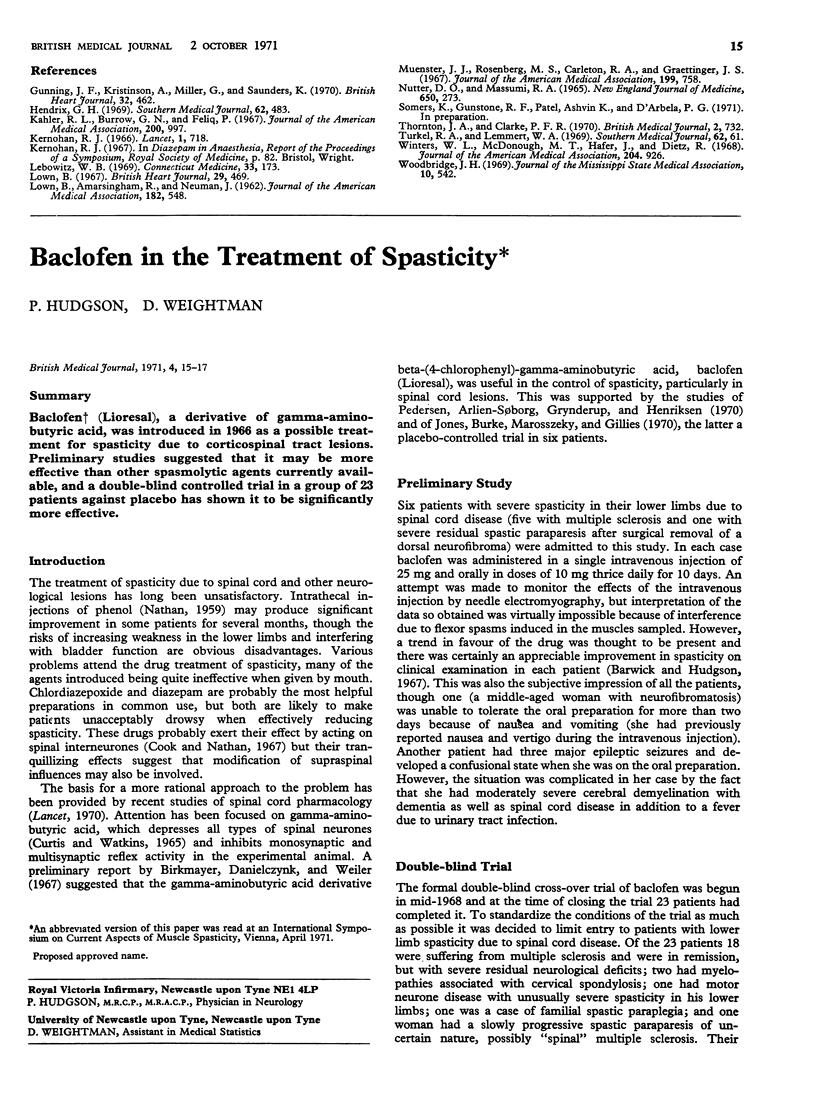Abstract
The induction of anaesthesia with intravenous diazepam is a valuable contribution to the simpler use of cardioversion and is the method of choice because it is readily available for elective cardioversion. Fifty-six cardioversion procedures were carried out by this method in an African hospital. No special premedication or drug preparation was used. There were no hazards apart from transient apnoea in two patients and persisting amnesia in one patient.
Full text
PDF


Selected References
These references are in PubMed. This may not be the complete list of references from this article.
- Gunning J. F., Kristinsson A., Miller G., Saunders K. Long-term follow-up of direct current cardioversion after cardiac surgery with special reference to quinidine. Br Heart J. 1970 Jul;32(4):462–466. doi: 10.1136/hrt.32.4.462. [DOI] [PMC free article] [PubMed] [Google Scholar]
- Hendrix G. H. Intravenous use of diazepam in cardioversion. South Med J. 1969 Apr;62(4):483–484. doi: 10.1097/00007611-196904000-00027. [DOI] [PubMed] [Google Scholar]
- Kahler R. L., Burrow G. N., Felig P. Diazepam-induced amnesia for cardioversion. JAMA. 1967 Jun 12;200(11):997–998. [PubMed] [Google Scholar]
- LOWN B., AMARASINGHAM R., NEUMAN J. New method for terminating cardiac arrhythmias. Use of synchronized capacitor discharge. JAMA. 1962 Nov 3;182:548–555. [PubMed] [Google Scholar]
- Lebowitz W. B. Electrical conversion of arrhythmias under diazepam sedation. Conn Med. 1969 Mar;33(3):173–174. [PubMed] [Google Scholar]
- Lown B. Electrical reversion of cardiac arrhythmias. Br Heart J. 1967 Jul;29(4):469–489. doi: 10.1136/hrt.29.4.469. [DOI] [PMC free article] [PubMed] [Google Scholar]
- Muenster J. J., Rosenberg M. S., Carleton R. A., Graettinger J. S. Comparison between diazepam and sodium thiopental during DC countershock. JAMA. 1967 Mar 6;199(10):758–760. [PubMed] [Google Scholar]
- Nutter D. O., Massumi R. A. Diazepam in cardioversion. N Engl J Med. 1965 Sep 16;273(12):650–651. doi: 10.1056/NEJM196509162731208. [DOI] [PubMed] [Google Scholar]
- Thornton J. A., Clarke P. F. Anxiety and investigations. Br Med J. 1970 Jun 20;2(5711):732–732. doi: 10.1136/bmj.2.5711.732-c. [DOI] [PMC free article] [PubMed] [Google Scholar]
- Winters W. L., Jr, McDonough M. T., Hafer J., Dietz R. Diazepam. A useful hypnotic drug for direct-current cardioversion. JAMA. 1968 Jun 3;204(10):926–928. doi: 10.1001/jama.204.10.926. [DOI] [PubMed] [Google Scholar]
- Woodbridge J. H. Experiences with electrical cardioversion in an outpatient clinic. J Miss State Med Assoc. 1969 Dec;10(12):542–544. [PubMed] [Google Scholar]


